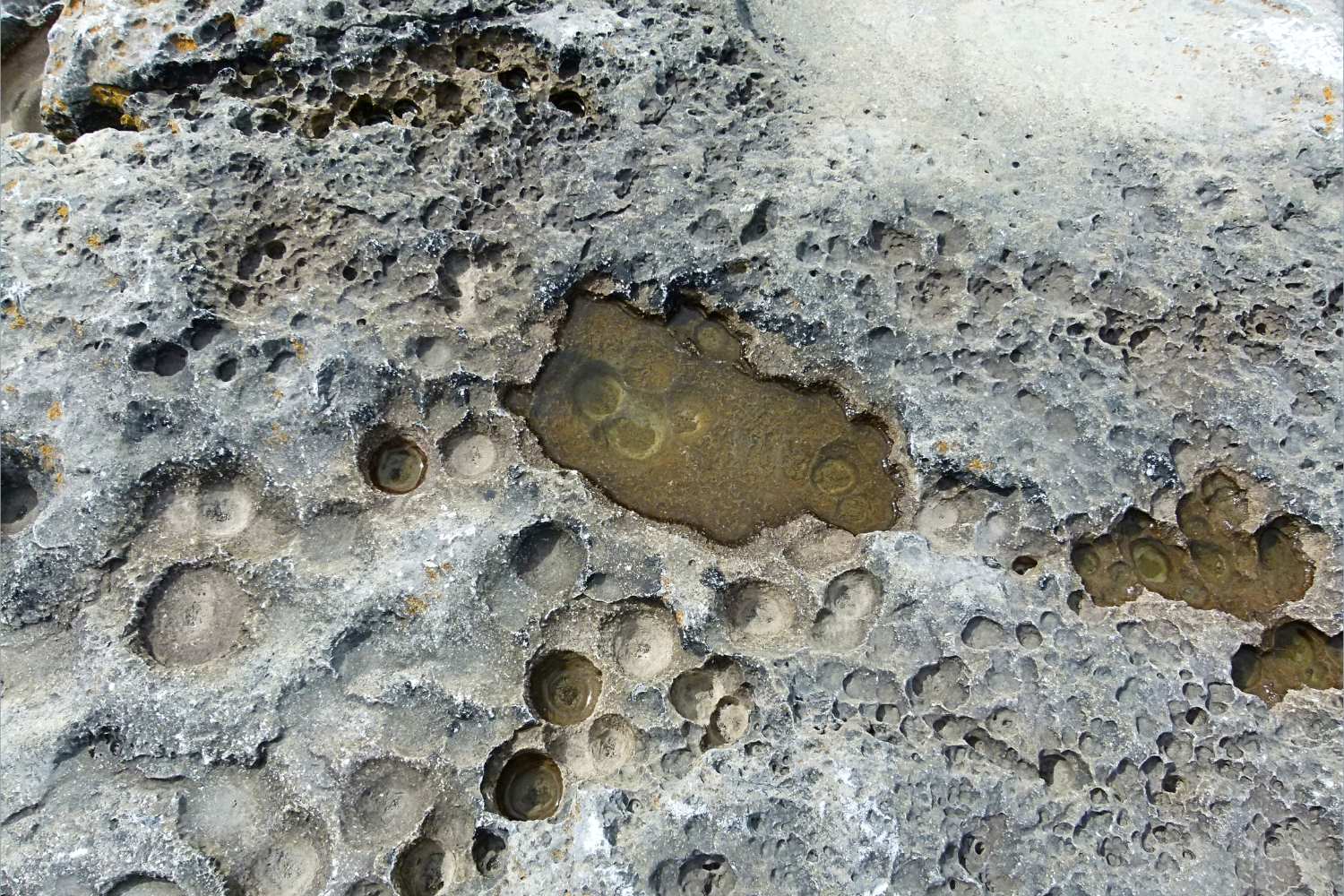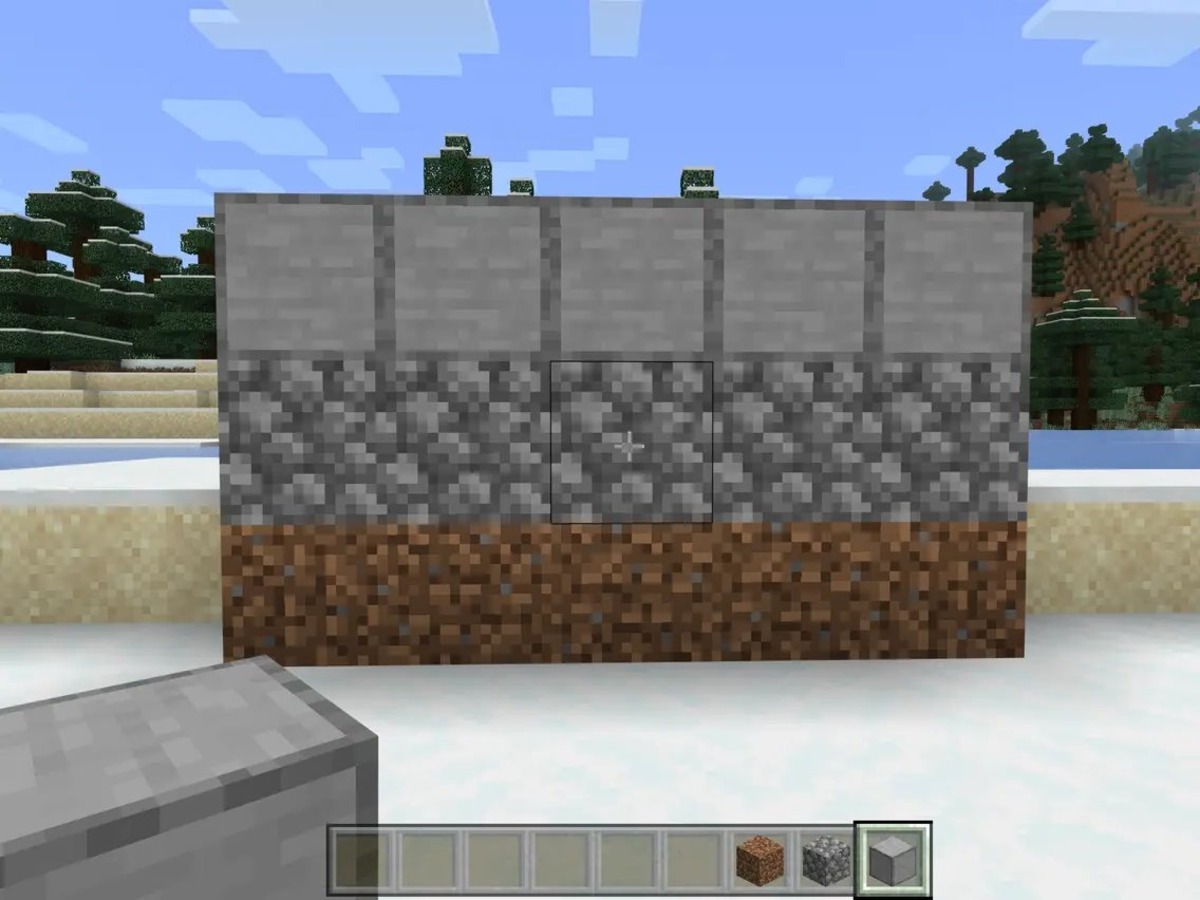Home>Science>The Surprising Way Acid Rain Destroys Rocks And Stones


Science
The Surprising Way Acid Rain Destroys Rocks And Stones
Published: January 4, 2024
Discover the impact of acid rain on rocks and stones from a scientific perspective. Uncover the surprising ways this natural phenomenon leads to destruction. Learn more about the science behind acid rain.
(Many of the links in this article redirect to a specific reviewed product. Your purchase of these products through affiliate links helps to generate commission for Noodls.com, at no extra cost. Learn more)
Table of Contents
Introduction
Acid rain has long been recognized as a significant environmental issue, with its detrimental effects on ecosystems and infrastructure. However, its impact on rocks and stones is often overlooked. The interaction between acid rain and geological formations is a fascinating yet concerning phenomenon that warrants closer examination.
In this article, we will delve into the surprising ways in which acid rain can gradually erode and alter rocks and stones, unraveling the chemical reactions that drive this process. By understanding the mechanisms at play, we can gain insight into the profound consequences of acid rain on natural and man-made structures, from ancient rock formations to architectural marvels.
Join us on a journey to explore the hidden influence of acid rain on the very foundations of our planet, and discover how this seemingly intangible environmental threat can leave a lasting imprint on the Earth's geological heritage.
What is Acid Rain?
Acid rain is a form of precipitation that contains high levels of nitric and sulfuric acids, resulting from the release of pollutants into the atmosphere. These pollutants, primarily emitted from industrial activities, vehicle exhausts, and the burning of fossil fuels, undergo chemical reactions in the atmosphere, leading to the formation of acidic compounds.
When these acidic compounds combine with water vapor in the atmosphere, they form acid rain, which can take the form of rain, snow, fog, or even dry particles. As this acidic precipitation falls to the Earth's surface, it can have far-reaching and detrimental effects on the environment, including soil, water bodies, vegetation, and human-made structures.
The widespread dispersion of acid rain is not confined to the regions where the pollutants are generated. Instead, it can travel long distances, carried by wind patterns, and impact areas far from its original source. This phenomenon underscores the interconnectedness of environmental systems and the global implications of pollution.
The acidic nature of acid rain is attributed to its low pH levels, indicating high acidity. Typically, normal rainwater has a pH of around 5.6, which is slightly acidic due to the presence of carbon dioxide in the atmosphere. In contrast, acid rain can have a pH level below 5.0, signifying a significantly higher acidity that can have profound and pervasive consequences.
The detrimental effects of acid rain extend beyond environmental concerns, as it also poses risks to human health and infrastructure. Understanding the composition and impact of acid rain is crucial for implementing effective measures to mitigate its effects and protect the natural environment and cultural heritage from its corrosive influence.
By comprehending the nature of acid rain and its far-reaching implications, we can take proactive steps to address its root causes and minimize its detrimental effects on the Earth's ecosystems and geological formations.
The Effects of Acid Rain on Rocks and Stones
The effects of acid rain on rocks and stones are profound and often imperceptible in the short term. Over time, however, the corrosive nature of acid rain can lead to significant alterations in geological formations and architectural structures. The primary mechanism through which acid rain impacts rocks and stones is chemical weathering, a process that gradually breaks down the minerals and compounds within these materials.
One of the key consequences of acid rain on rocks and stones is the erosion of their surfaces. As acidic precipitation comes into contact with these surfaces, it initiates a series of chemical reactions that weaken the bonds holding the minerals together. This process, known as dissolution, causes the gradual disintegration and loss of material from the exposed surfaces of rocks and stones. Consequently, intricate geological features and intricate architectural details can be eroded and reshaped by the persistent onslaught of acid rain.
Moreover, acid rain can lead to the leaching of essential minerals from rocks and stones. As the acidic water permeates the porous structures of these materials, it can dissolve and carry away vital components, such as calcium, magnesium, and potassium. This depletion of essential minerals can compromise the structural integrity of rocks and stones, making them more susceptible to further degradation and mechanical weathering processes.
In addition to surface erosion and mineral leaching, acid rain can also induce chemical alterations within rocks and stones. The acidic compounds present in the precipitation can react with the minerals and compounds in these materials, leading to the formation of new substances. For instance, the reaction between carbonate minerals and acidic solutions can produce soluble by-products, contributing to the gradual breakdown and transformation of rock formations.
The impact of acid rain on architectural structures, particularly those constructed from limestone and marble, is equally significant. These materials are particularly vulnerable to the corrosive effects of acid rain due to their composition, which primarily consists of calcium carbonate. As a result, historical buildings, statues, and monuments crafted from these materials can exhibit visible signs of deterioration, including surface pitting, discoloration, and loss of fine details.
In summary, the effects of acid rain on rocks and stones are multifaceted, encompassing surface erosion, mineral leaching, and chemical alterations. These processes collectively contribute to the gradual degradation and transformation of geological formations and architectural marvels, highlighting the pervasive and enduring impact of acid rain on the Earth's geological heritage.
The Chemical Reactions Behind Acid Rain's Destructive Impact
The destructive impact of acid rain on rocks and stones stems from a series of complex chemical reactions that unfold upon the interaction between acidic precipitation and geological materials. These reactions, driven by the acidic nature of the rainwater, instigate transformative processes that gradually alter the composition and structure of rocks and stones.
One of the primary chemical reactions involved in acid rain's destructive impact is the dissolution of minerals. When acidic precipitation, containing sulfuric and nitric acids, comes into contact with rocks and stones, it initiates a process of chemical weathering. The acidic nature of the rainwater facilitates the breakdown of minerals, particularly those containing carbonate compounds, through a series of dissolution reactions. For instance, calcite, a common mineral in limestone and marble, reacts with acidic solutions to form soluble calcium ions, carbon dioxide, and water. This dissolution process leads to the gradual erosion and loss of material from the surfaces of rocks and stones, contributing to their degradation over time.
Furthermore, the reaction between acidic solutions and silicate minerals, such as feldspar and quartz, can result in the release of metal ions and silica. This process, known as hydrolysis, alters the mineral composition of rocks and stones, leading to the formation of secondary minerals and the weakening of the original structure. As a consequence, the once-solid geological formations can undergo significant changes in their physical and chemical properties, ultimately succumbing to the erosive effects of acid rain.
Additionally, the chemical reactions induced by acid rain can lead to the leaching of essential cations, such as calcium, magnesium, and potassium, from rocks and stones. As the acidic water permeates the porous structures of these materials, it dissolves and carries away these vital components, gradually depleting the minerals essential for the structural integrity of geological formations and architectural structures. This leaching process further exacerbates the susceptibility of rocks and stones to ongoing weathering and erosion, amplifying the long-term impact of acid rain on these materials.
In summary, the chemical reactions behind acid rain's destructive impact encompass dissolution, hydrolysis, and mineral leaching, collectively contributing to the gradual deterioration and transformation of rocks and stones. By unraveling the intricate mechanisms at play, we gain a deeper understanding of the profound and enduring consequences of acid rain on the Earth's geological heritage.
Case Studies: Acid Rain's Impact on Famous Rock Formations
The Iconic Cliffs of Moher, Ireland
The Cliffs of Moher, renowned for their dramatic coastal vistas and geological significance, have been profoundly affected by the corrosive influence of acid rain. Composed primarily of sandstone and shale, these majestic cliffs have borne witness to centuries of natural forces, yet the insidious impact of acid rain has left an indelible mark on their rugged façade. Over time, the acidic precipitation has initiated chemical weathering processes, leading to the erosion and alteration of the cliff surfaces. The once-prominent features of the cliffs have gradually succumbed to the relentless onslaught of acid rain, underscoring the vulnerability of even the most enduring geological formations to environmental degradation.
The Enigmatic Hoodoos of Bryce Canyon, United States
Bryce Canyon's mesmerizing landscape, adorned with towering hoodoos sculpted by geological processes, has faced the pervasive effects of acid rain. Comprised predominantly of sedimentary rock formations, including limestone and sandstone, the delicate features of the hoodoos have been subject to the gradual erosive forces unleashed by acidic precipitation. As the chemical reactions induced by acid rain alter the mineral composition of these formations, the intricate hoodoos have exhibited signs of surface erosion and structural weakening. The enduring legacy of Bryce Canyon's geological marvels has been irrevocably shaped by the subtle yet profound impact of acid rain, serving as a poignant reminder of the interconnectedness between environmental factors and the preservation of natural wonders.
The Majestic Limestone Karsts of Guilin, China
Guilin's enchanting karst landscape, characterized by its towering limestone formations and verdant valleys, has not been immune to the transformative effects of acid rain. The intricate karsts, sculpted over millennia by natural processes, have faced gradual deterioration due to the corrosive nature of acidic precipitation. The dissolution of calcium carbonate, a primary component of limestone, has led to the erosion and reshaping of these iconic formations, altering their once-pristine contours. The enduring allure of Guilin's karst topography has been tempered by the pervasive influence of acid rain, underscoring the imperative of safeguarding these geological treasures against the encroachment of environmental degradation.
In each of these case studies, the profound impact of acid rain on famous rock formations serves as a poignant testament to the enduring vulnerability of geological wonders in the face of environmental challenges. These examples illuminate the far-reaching consequences of acid rain on the Earth's geological heritage, compelling us to recognize the imperative of preserving and protecting these natural marvels for future generations.
Mitigating the Impact of Acid Rain on Rocks and Stones
Mitigating the impact of acid rain on rocks and stones necessitates a multifaceted approach that encompasses proactive measures to address the root causes of acid rain, as well as targeted strategies to protect and preserve geological formations and architectural structures.
Addressing the Root Causes
Addressing the root causes of acid rain entails implementing stringent regulations and technological advancements aimed at reducing the emissions of pollutants that contribute to its formation. By enforcing emission standards for industrial facilities, power plants, and vehicles, it is possible to curtail the release of sulfur dioxide and nitrogen oxides, the primary precursors of acid rain. Furthermore, the widespread adoption of cleaner energy sources, such as renewable energy and low-emission technologies, can significantly mitigate the atmospheric deposition of acidic compounds, thereby reducing the prevalence of acid rain.
Protecting Geological Formations
Protecting geological formations from the corrosive effects of acid rain involves the application of protective coatings and sealants specifically designed to safeguard rocks and stones. Utilizing environmentally friendly sealants that form a protective barrier against acidic precipitation can mitigate the erosive impact on geological surfaces, preserving their natural integrity and aesthetic appeal. Additionally, the implementation of targeted conservation efforts, including the strategic placement of barriers to minimize direct exposure to acid rain and the establishment of monitoring systems to assess the ongoing impact, can help safeguard vulnerable geological formations from progressive degradation.
Preserving Architectural Heritage
Preserving architectural heritage, particularly structures constructed from susceptible materials such as limestone and marble, necessitates proactive maintenance and restoration initiatives. Employing specialized cleaning techniques that mitigate the effects of acid rain-induced deterioration, such as gentle chemical treatments and non-abrasive cleaning methods, can aid in revitalizing historical buildings and monuments. Furthermore, integrating architectural conservation practices that reinforce the structural resilience of vulnerable materials and mitigate the long-term impact of acid rain is essential for ensuring the preservation of cultural landmarks and architectural masterpieces.
Fostering Environmental Stewardship
Fostering environmental stewardship through public awareness campaigns, educational initiatives, and community engagement plays a pivotal role in mitigating the impact of acid rain on rocks and stones. By raising awareness about the detrimental effects of acid rain and promoting sustainable practices that reduce pollution, such as reducing energy consumption and advocating for eco-friendly transportation alternatives, individuals and communities can contribute to the collective effort to mitigate the pervasive influence of acid rain on geological and architectural heritage.
In essence, mitigating the impact of acid rain on rocks and stones demands a concerted commitment to environmental protection, technological innovation, and preservation efforts. By addressing the root causes of acid rain, implementing protective measures for geological formations and architectural structures, and fostering a culture of environmental stewardship, it is possible to mitigate the enduring impact of acid rain and safeguard the Earth's geological heritage for future generations.
Read more: 10 Stylish Ways To Rock A Denim Shirt
Conclusion
In conclusion, the insidious influence of acid rain on rocks and stones unveils a profound narrative of environmental interconnectedness and the enduring vulnerability of geological formations and architectural marvels. The far-reaching effects of acid rain, driven by complex chemical reactions and gradual erosive processes, underscore the imperative of understanding and addressing this pervasive environmental challenge.
The multifaceted impact of acid rain on rocks and stones encompasses surface erosion, mineral leaching, and chemical alterations, gradually reshaping geological formations and architectural structures over time. From the iconic cliffs of Moher in Ireland to the enigmatic hoodoos of Bryce Canyon in the United States and the majestic limestone karsts of Guilin in China, famous rock formations bear witness to the transformative effects of acid rain, serving as poignant reminders of the delicate balance between natural wonders and environmental forces.
Mitigating the impact of acid rain on rocks and stones necessitates a comprehensive approach that addresses the root causes of acid rain through emission reduction strategies and embraces targeted measures to protect and preserve geological formations and architectural heritage. By fostering environmental stewardship and advocating for sustainable practices, we can contribute to the collective endeavor of safeguarding the Earth's geological legacy from the corrosive influence of acid rain.
Ultimately, the narrative of acid rain's impact on rocks and stones transcends the realm of geological processes, offering profound insights into the intricate dynamics of the Earth's ecosystems and the imperative of environmental conservation. By unraveling the hidden influence of acid rain on geological formations and architectural treasures, we gain a deeper appreciation for the delicate interplay between human activities and the natural world, inspiring a commitment to preserving the Earth's geological heritage for generations to come.
In essence, the enduring legacy of acid rain on rocks and stones serves as a compelling testament to the imperative of collective action in safeguarding the Earth's geological wonders, underscoring the intrinsic value of environmental stewardship and the preservation of natural and cultural heritage. Through concerted efforts to address the root causes of acid rain, implement protective measures, and foster a culture of environmental responsibility, we can chart a path towards a sustainable future where the Earth's geological legacy remains unyielding in the face of environmental challenges.











